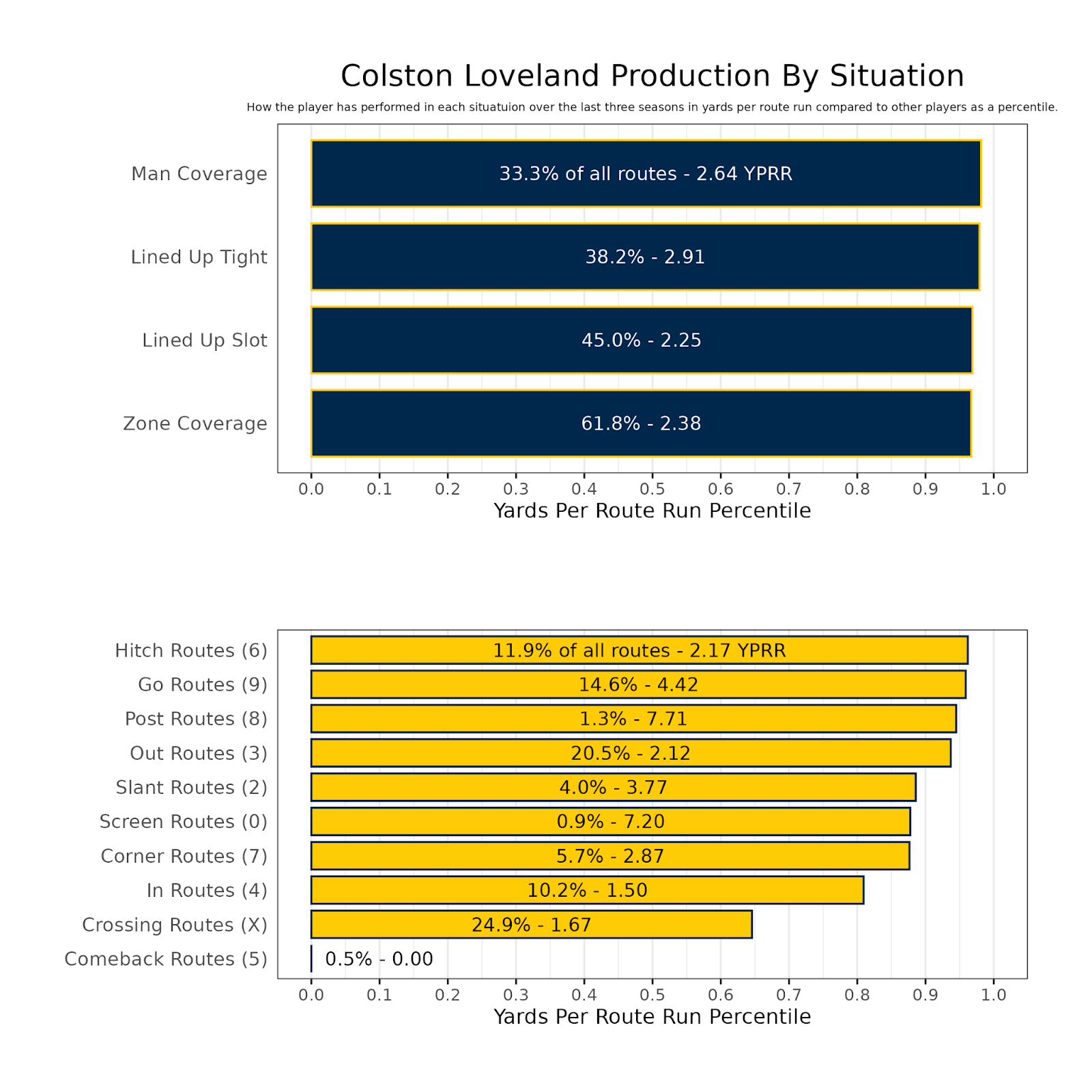Fantasy Football Rankings 2025: Dynasty rookie superflex top 60

2TD7G8P December 16, 2023, Los Angeles, California, USA: Boise State running back ASHTON JEANTY (2) runs with the ball while being tackled by UCLA linebacker DARIUS MUASAU (53) during the 2023 Starco Brands LA Bowl Hosted by Gronk between UCLA and Boise State at SoFi Stadium in Los Angeles, California. (Credit Image: © Brenton Tse/ZUMA Press Wire) EDITORIAL USAGE ONLY! Not for Commercial USAGE!
By
• Two running backs lead the way despite the superflex format: While quarterbacks rank much higher in superflex leagues than single quarterback leagues, Ashton Jeanty and Omarion Hampton rank too high among running backs to pass on them early.
• Shedeur Sanders takes the eighth spot: It’s unclear where Sanders will be drafted or if he will start during his rookie season. While any team in desperate need of a quarterback will be happy to take him, most dynasty managers should pick a different position in the first round of their dynasty rookie drafts.
• 2025 NFL Draft season is here: Try PFF’s best-in-class Mock Draft Simulator and learn about 2025’s top prospects while trading and drafting for your favorite NFL team.
Estimated Reading Time: 11 minutes

We are one week away from the NFL draft, so it’s time for a first look at the 2025 fantasy football dynasty superflex rookie rankings.
Landing spots will go a long way in determining where the first-year players ultimately rank, as well as average draft position, once it stabilizes. These dynasty rookie rankings are for two quarterback, PPR leagues with a general balance between trying to win now and playing for the long term.
Last updated: 5 a.m. Monday, April 14
Click here for more draft tools:
1. RBAshton Jeanty,Boise State (RB1)
Jeanty is the 2025 NFL Draft‘s top running back prospect — and the best of the past several drafts. He ranks fifth on PFF’s big board, joining Bijan Robinson as the only running back we’ve ranked in the top 10 since 2018. He’s the first running back to rank in the top 10 on consensus big boards since Saquon Barkley in 2018. Jeanty has the highest career PFF overall grade of any FBS running back over the 11 college seasons PFF has graded. That includes a 99.9 PFF rushing grade and an 81.4 PFF receiving grade. While his 81.4 PFF receiving grade isn’t historically excellent, it is better than that of the other top 10 running backs on PFF’s big board and the consensus big boards.
The Boise State product is the clear top option in dynasty leagues, including superflex. The difference between him being a first-round redraft pick and a second-round pick could depend on his landing spot. TheChicago Bears are the top option after hiring Ben Johnson as their head coach and investing heavily in their interior offensive line in March. The Las Vegas Raiders are another common landing spot, where Jeanty would be a focal point of the offense but might not score as many touchdowns.
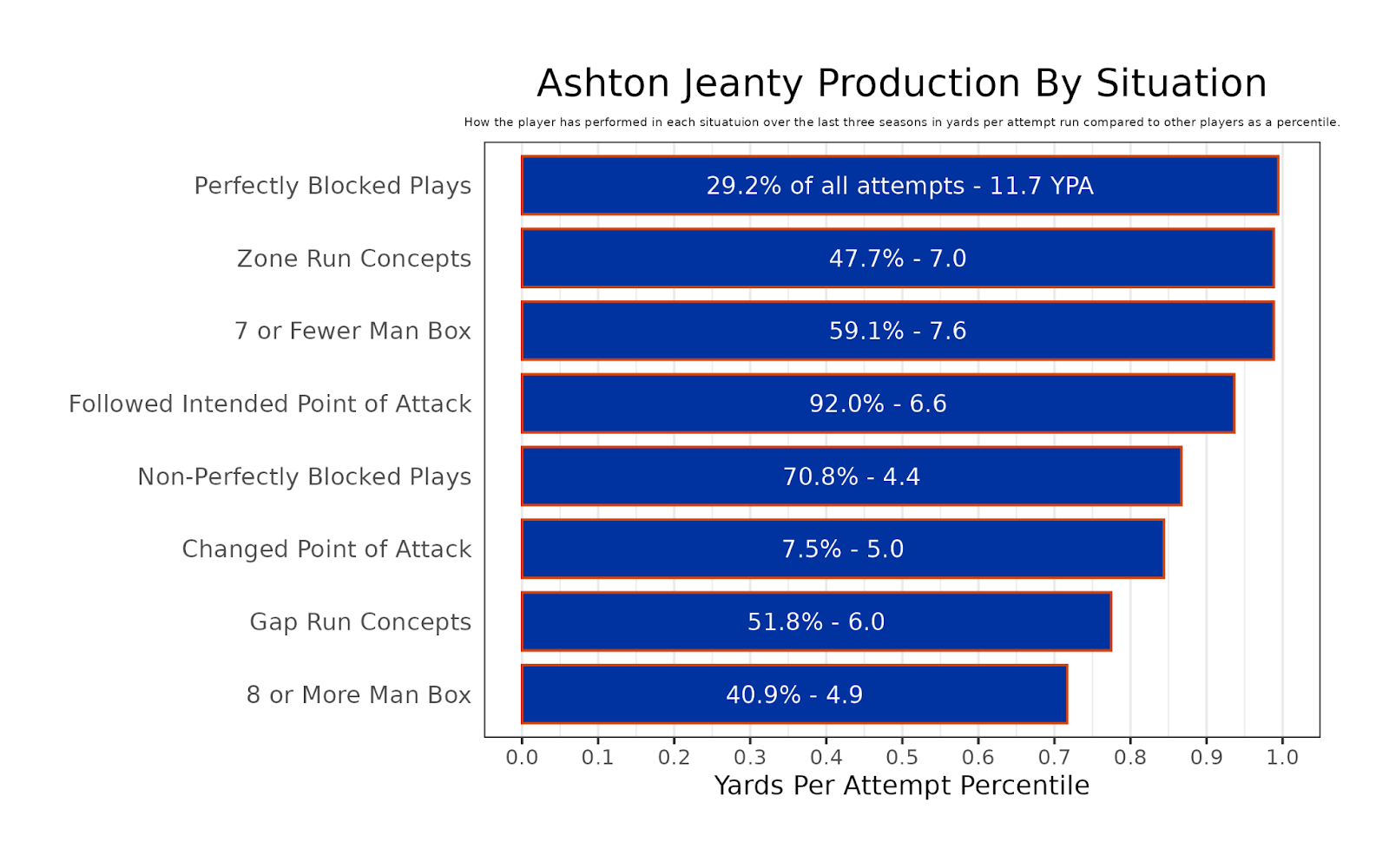
Hampton spent the past two seasons as North Carolina‘s lead running back, finishing with at least a 90.0 PFF overall grade and 110 rushing yards per game in each season. He ranks second among running backs on PFF’s big board and consensus big boards. His ranking (24th) on PFF’s board is the fourth highest for a running back since 2018, behind Ashton Jeanty, Saquon Barkley and Bijan Robinson.
PFF’s Trevor Sikkema calls Hampton “one of the class’ most physically gifted running backs.” He stacks up well in PFF’s stable metrics, placing as the top Power-Four running back in yards after contact per attempt since 2023. Trevor and the stable metrics note Hampton could perform exceptionally well in a zone scheme.
While most mock drafts in January included only one running back in the first round, it has become growingly common for Hampton to be a late first-round draft pick. PFF analyst Josh Liskiewitz’s latest mock has him going to thePittsburgh Steelers at pick No. 21.

3. QB Cam Ward, Miami (FL)(QB1)
Ward followed an unusual path toward the potential first overall pick of the NFL draft. He spent two seasons as the quarterback of Incarnate Word, two seasons as the quarterback of Washington State, and one season at the University of Miami. His growth was substantial in recent seasons, particularly in his big-time throw rate. This led to more yards, more touchdowns and a much better PFF grade. However, his turnover-worthy play rate only improved slightly. Our draft guide notes, “he is ultra-confident, at times to a fault. His mentality could one day make him an All-Pro if his fundamentals don’t drop him from the league entirely.”
The turnover-worthy plays, mixed with the low grades from 2022, have led Ward to a career 81.6 passing grade in the FBS. That is the second-lowest of the 11 first-round quarterbacks of the last three seasons, only ahead of Anthony Richardson. However, Ward will likely be playing from behind in many games, and his risky style could also lead to several big plays. That passing volume could be enough to make him a fantasy starter some weeks.
Ward will likely be the draft’s first pick, but fantasy expectations shouldn’t be as high for Ward as other recent picks, given the likely situation and Ward’s lack of rushing upside. There is a chance Ward could work out despite this, as C.J. Stroud did two years ago. Still, any fantasy manager wanting a young, inexperienced, high-upside quarterback late could also turn to Michael Penix Jr. or J.J. McCarthy.
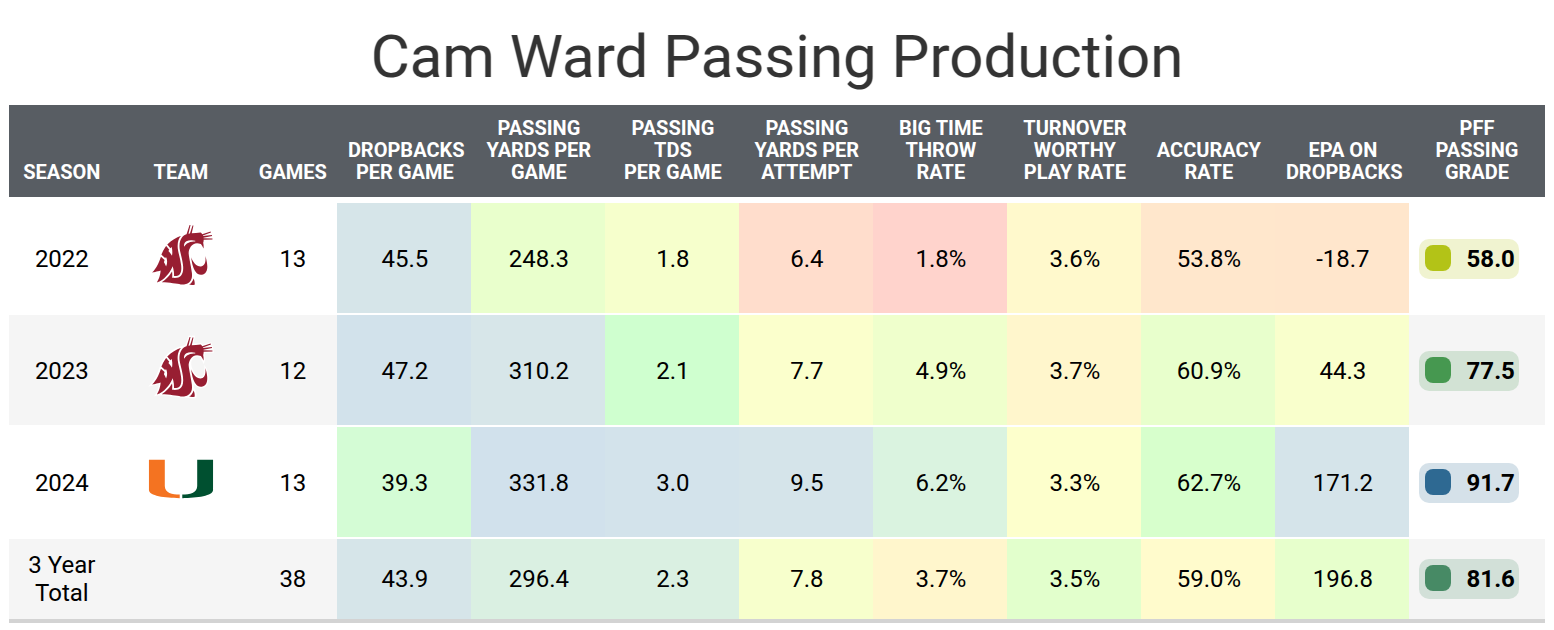
4. RBTreVeyon Henderson,Ohio State (RB3)
There is no shortage of talented running backs in the 2025 NFL Draft, and there is no consensus on which order they should be picked beyond the top two. The draft capital spent on each back and the quality of the landing spot will go a long way in determining that for fantasy football purposes. Until then, Henderson is the next-ranked back due to his potential to play in any situation.
Henderson has played significantly on third downs throughout his career. He is among the best running backs in both PFF receiving grade and yards per route run. Along with his receiving production, he was elite on a per-play basis last season while playing a limited role on early downs. He converted 40% of his runs to first downs and gained at least 15 yards on 14% of his carries.
The biggest concern with Henderson is if he can play more than 65% of his team’s offensive snaps — something he never managed in college. He is on the smaller side for a running back, but Kyren Williams, Dalvin Cook and Devin Singletary are examples of NFL running backs who are a similar size and have played significant roles in the league.
Henderson will need an offensive play-caller willing to feature him in the passing game, and if he finds the right match, he could dominate PPR leagues immediately as a rookie.

5. RBQuinshon Judkins,Ohio State (RB4)
Judkins, the second Ohio State running back on this list, spent time at Ole Miss before joining the Buckeyes, where he was no longer the clear lead running back but was just as effective. He is one of the more well-rounded running backs in the draft. He graded well, partly thanks to his consistent play, but there are also few metrics outside of his first-down rate that help him stand out in the class.
While Judkins was a classic early-down back in his one season at Ohio State, he gained experience in receiving situations at Ole Miss. His cumulative and rate stats in the passing game improved each season, leading to an improved PFF receiving grade.
While there aren’t many numbers pointing to Judkins becoming a genuinely elite NFL back, he has shown enough that he’s worthy of being a starter. Any running back who can hold down a starting job has significant fantasy value, particularly when they are capable of playing all three downs.
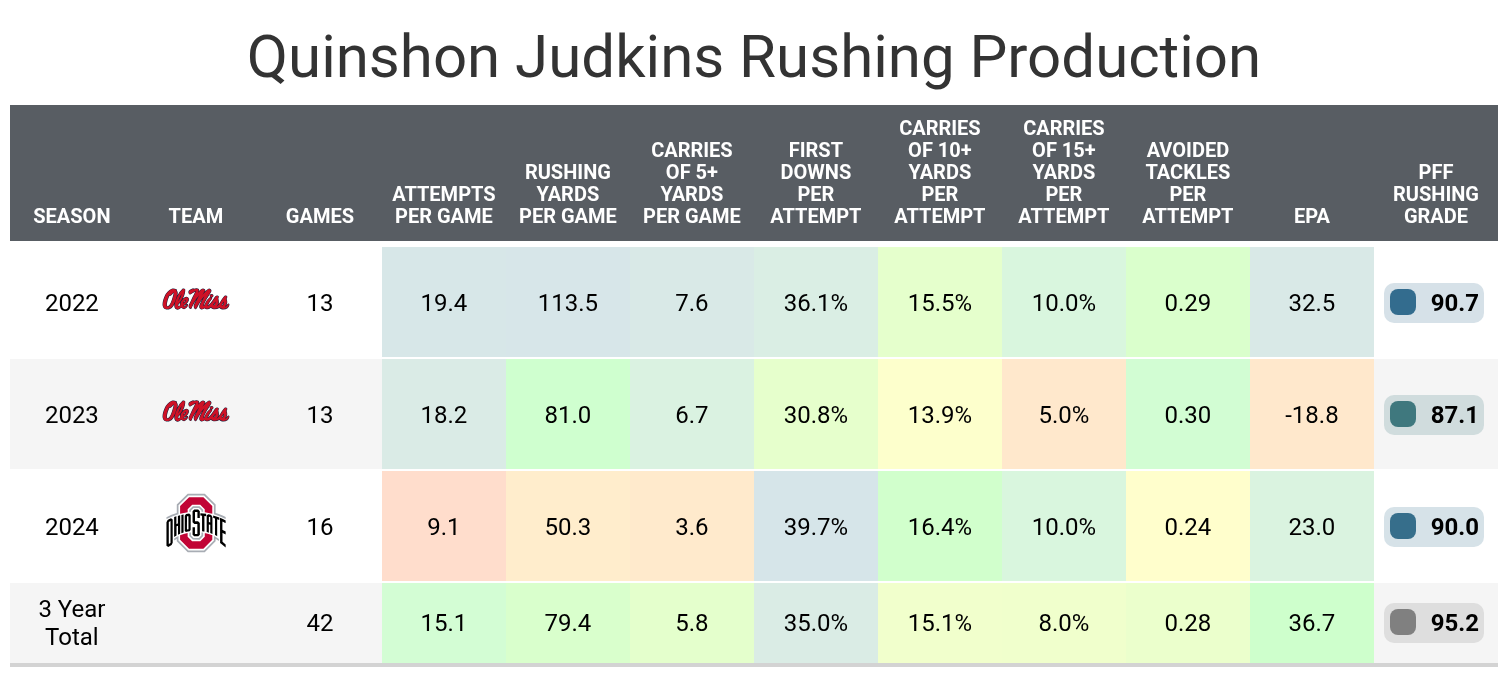
McMillan is a prototypical X receiver who is expected to be selected among the top 10 overall picks. He is one of the most accomplished first-round rookies of the past seven draft classes, finishing with 3,414 career receiving yards at Arizona. DeVonta Smith is the only first-round receiver who had more receiving yards in college. He accomplished this despite 33% of his targets being uncatchable, one of the lowest rates among the first-round wide receivers.
At 6-foot-5, McMillan is the tallest of the recent first-round wide receivers, joining Marvin Harrison Jr., Brian Thomas Jr., Drake London and N’Keal Harry. Compared to that group, McMillan has more experience with deep passes and saw the second-highest target rate from the slot, behind London. His college route tree was very similar to Harrison’s. While Harrison graded better and was generally more productive on a per-play basis, McMillan was faster and much better at avoiding tackles.
Unfortunately, a wide receiver picked in the top 10 is typically paired with below-average quarterback play, which matters more for X receivers than those with a lower average depth of target. Harrison, Thomas, Rome Odunze and Xavier Legette were all 6-foot-3 or taller and drafted in the first round last year. All dealt with below-average quarterback accuracy on deep and intermediate passes. Thomas was the only one to outperform expectations despite the quarterback play, thanks to a high 24.9% targets per route and explosive plays. Given McMillan’s relatively impressive speed and elusiveness for his size, he might be more likely to thrive despite a subpar quarterback room than some of these other receivers.
Most of McMillan’s potential landing spots have uncertain quarterback situations, but the best option may be the New England Patriots at Pick No. 4.Drake Maye’s 46.2% intermediate and deep target accuracy in 2024 ranked 16th among 37 qualifying quarterbacks. The Patriots also had the third-fewest targets to outside receivers and the lowest team PFF receiving grade among their outside receivers, so McMillan could quickly earn a high target share.
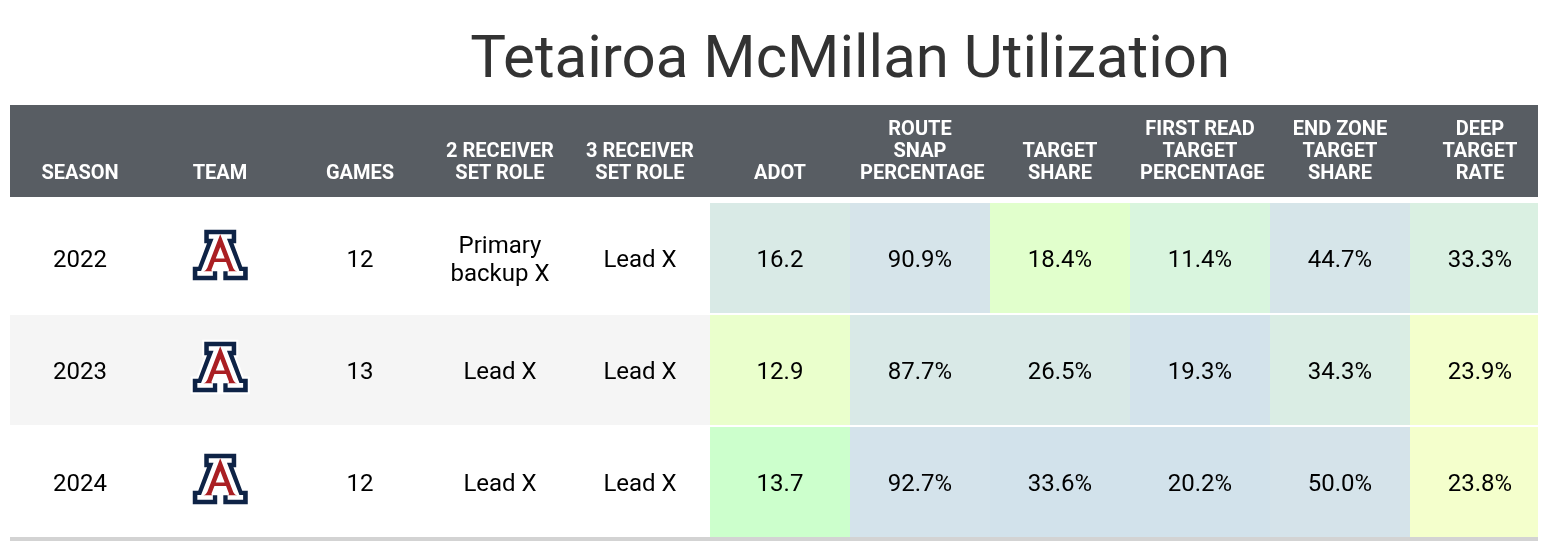
7. RBKaleb Johnson,Iowa (RB5)
Johnson is the traditional north-south runner with minimal experience in the passing game. When everything was going right for Iowa‘s offense, few running backs were better. He didn’t become Iowa‘s clear lead starter until 2024, but that led to 128 yards per game. While he converted first downs at a below-average rate, he was one of the best at creating big plays, leading to 26.0 expected points added.
His lack of receiving production could limit his NFL upside. Eight running backs in the NFL are at least 6-foot, weigh at least 220 pounds and have played at least 1,000 offensive snaps over the past three years. That group includes Saquon Barkley, Najee Harris, Derrick Henry, James Conner, Rhamondre Stevenson, Brian Robinson, Ezekiel Elliott and A.J. Dillon. Robinson is the only back from that group with a PFF receiving grade above 65.0, but he accomplished that while averaging less than two receptions per game.
Three of those running backs finished among the top 12 last season, so Johnson could become more than just a borderline fantasy starter if he lives up to the hype. A lot will depend on his landing spot, how quickly he can reach at least 15 carries per game, and how much help he receives from his offensive line.
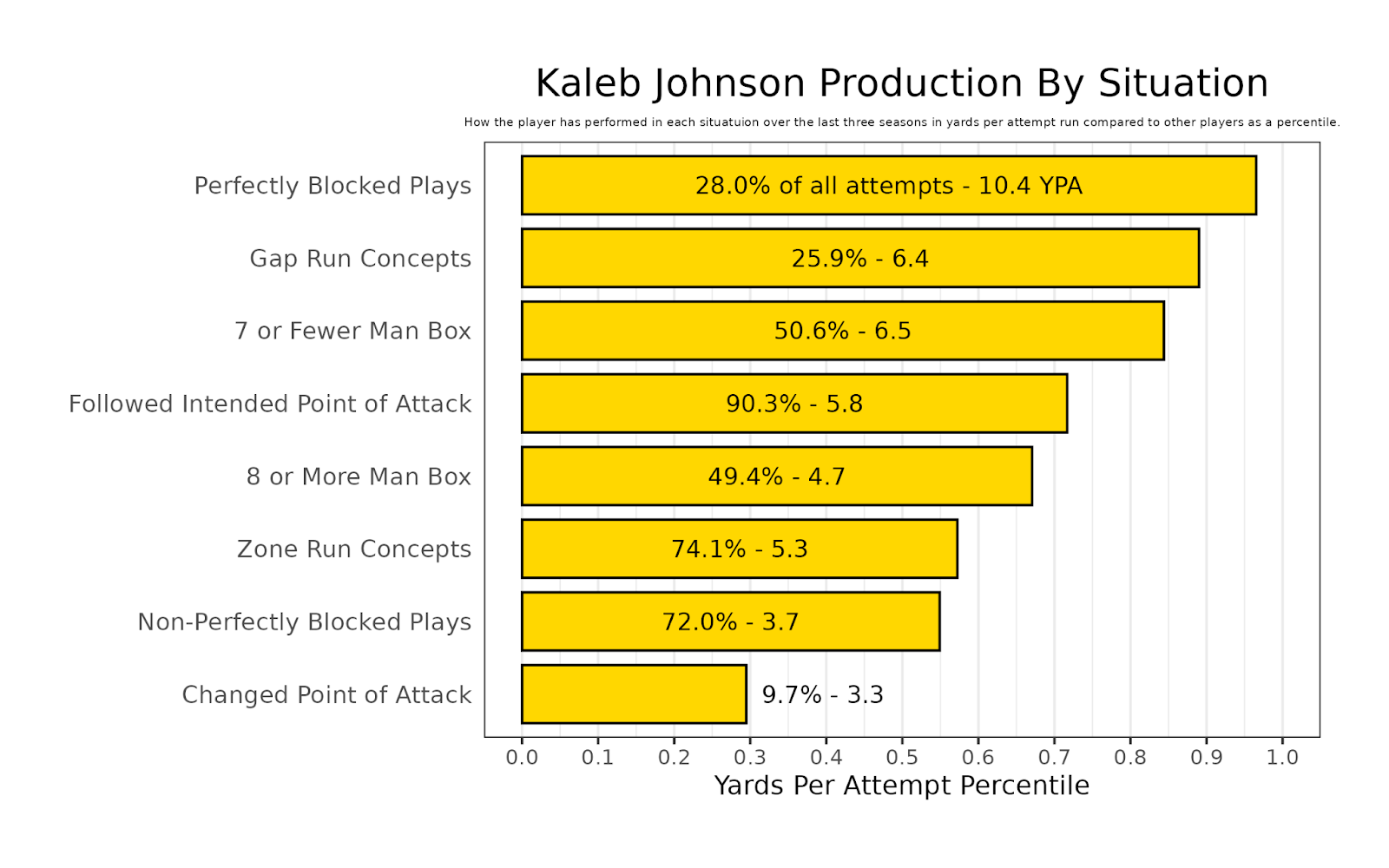
8. QBShedeur Sanders,Colorado (QB2)
A month ago, Sanders seemed destined to be the second or third pick in the NFL draft. Recently, the betting odds for the second pick have shifted towards Abdul Carter or Travis Hunter and away from Sanders. The New York Giants signed Russell Wilson and Jameis Winston, which puts Sanders’ fate as a rookie in flux. It’s still possible he lands with the Cleveland Browns at two or falls to the Pittsburgh Steelers at 21, where he would be a starter. Some mocks have moved toward Sanders landing with the New York Jets or New Orleans Saints, where he would likely start his career as a backup.
Sanders ranks 45th on our big board, which typically isn’t an excellent sign for quarterbacks. Past quarterbacks in the 40-50 range include Hendon Hooker, Desmond Ridder, Kenny Pickett and Kyle Lauletta. At the same time, Brock Purdy is the only quarterback with a lower rank in the previous four seasons who has become a normal NFL starter. Still, he will be given a chance to be a starter in the NFL at some point in his career, and any starting NFL quarterback has value in superflex leagues.
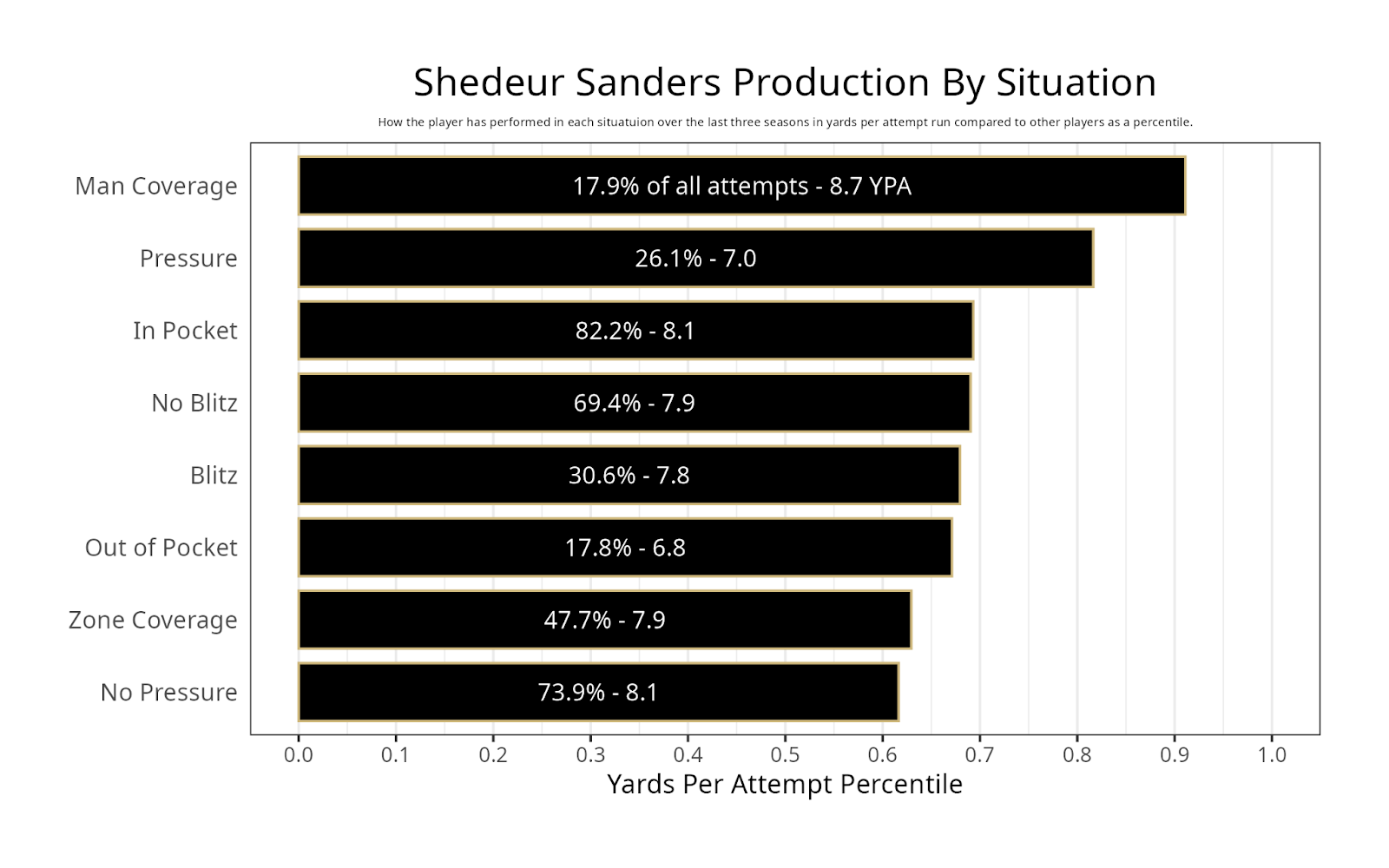
9. RBCam Skattebo,Arizona State (RB6)
Skattebo is one of the most unique running backs in the draft class. He measured 5-foot-10 with a 29 7/8-inch arm length, putting him in the bottom 10th percentile among running backs. However, his vertical and broad jumps were in the top 20th percentile, and at 219 pounds, he was near average. He was clearly the slowest running back among the top 11 projected rookie running backs, with an average max speed of 0.7 mph less than the next closest running back. However, his size relative to his height makes him great at converting first downs. His 33.6% first downs per attempt rate was the highest among the same top 11 backs in the class.
Skattebo is capable of being a featured back in an NFL offense. PFF’s draft guide compares him to Kyren Williams, who has played a feature role with the Los Angeles Rams. The Arizona State product played at least 65% of snaps in every situation in the past two seasons, outside of the usual early-down snaps. Those situations are where it’s easiest to bring in another running back who doesn’t specialize in anything.

10. TETyler Warren,Penn State (TE1)
Warren’s 2024 season was the most impressive campaign by a Power-Five tight end in the PFF era. His PFF receiving grade ranked second to Kyle Pitts in 2020, but Warren received twice as many targets. The Penn State product produced 1,226 receiving yards — over 250 more than any other tight end in a PFF-graded season. Mark Andrews and Brock Bowers also posted top-five seasons. His rate stats were just as impressive as his cumulative stats.
Warren has the traits of a good blocker, although he didn’t necessarily grade well in that department last season while he shined as a receiver. He graded better as a blocker in past seasons but saw drop-offs in his PFF receiving grade in those years. There is little negative to say about Warren outside of his limited sample size of greatness.
He is this low mainly because of positional importance and inconsistency among the top tight end prospects in recent seasons. While Brock Bowers was elite as a rookie, Dalton Kincaid and Michael Mayer are two other tight ends who ranked highly on both PFF’s big board and consensus big boards, and neither has turned into a consistent fantasy starter. Fantasy managers needing a tight end might drive up Warren’s average draft position, but he should be picked after the other players in dynasty start-up leagues.
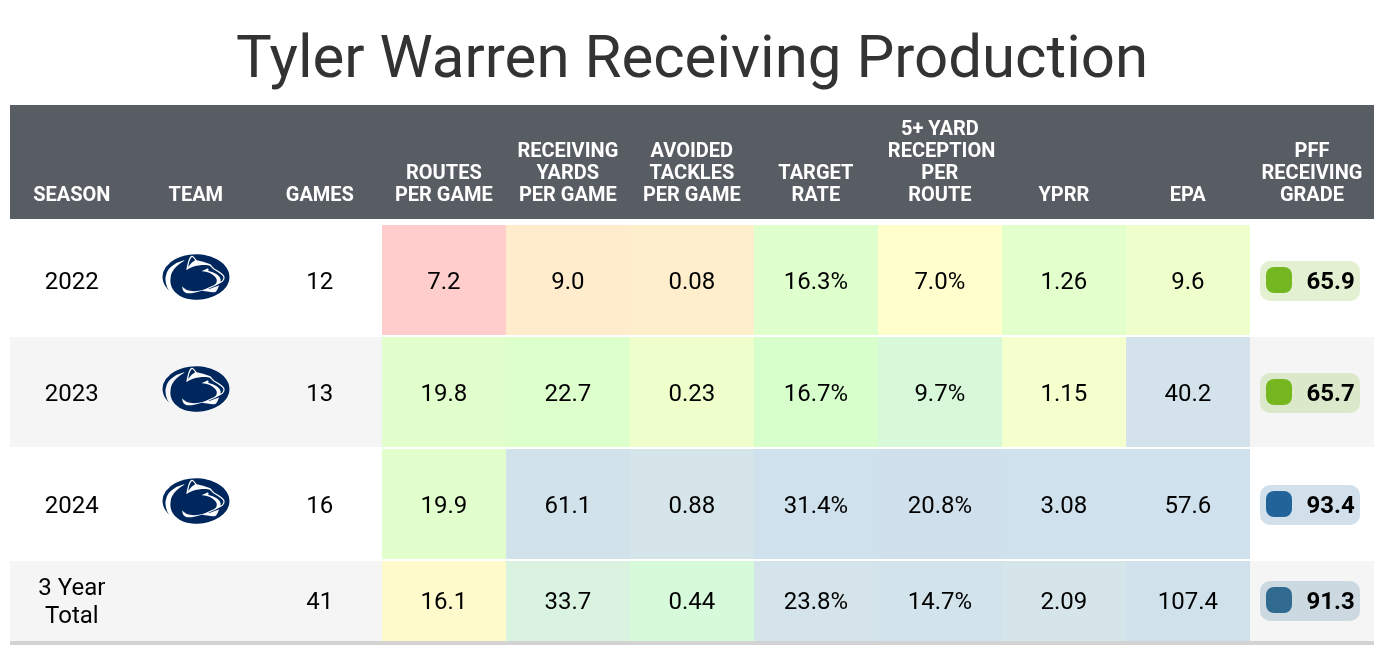
11. WRLuther Burden III,Missouri (WR2)
Burden is the NFL’s next great slot receiver. After spending his 2022 season as an outside receiver, he moved inside in 2023. He lined up in the slot for 84% of his offensive snaps over the past two seasons. He was excellent at avoiding tackles and churning out yards after the catch, and his 9.1-yard average target depth is among the lowest 15% of wide receivers in the draft class. Jaxon Smith-Njigba, Josh Downs,Drake London and Rashee Rice are other wide receivers who had average depths in the 8.8-9.7-yard range and turned that style of play in college into NFL success.
The only concern is if he lands on a team that restricts him to playing only in the slot. Smith-Njigba wasn’t a primary receiver in two-receiver sets until his second season, while Downs has stayed as a slot-only receiver throughout his career. It is challenging for a slot-only player in three-receiver sets to be a consistent fantasy starter, according to the FSWA award-nominated article on wide receiver utilization. Luckily, Burden is the size of a Z receiver, making it more likely he can be an every-down player than others who played predominantly in the slot in college.
Burden has been most often mocked to theArizona Cardinals,Houston Texans andKansas City Chiefs. He would start as the third option in each of those passing games, at best, although there is a chance he could work his way up to second.
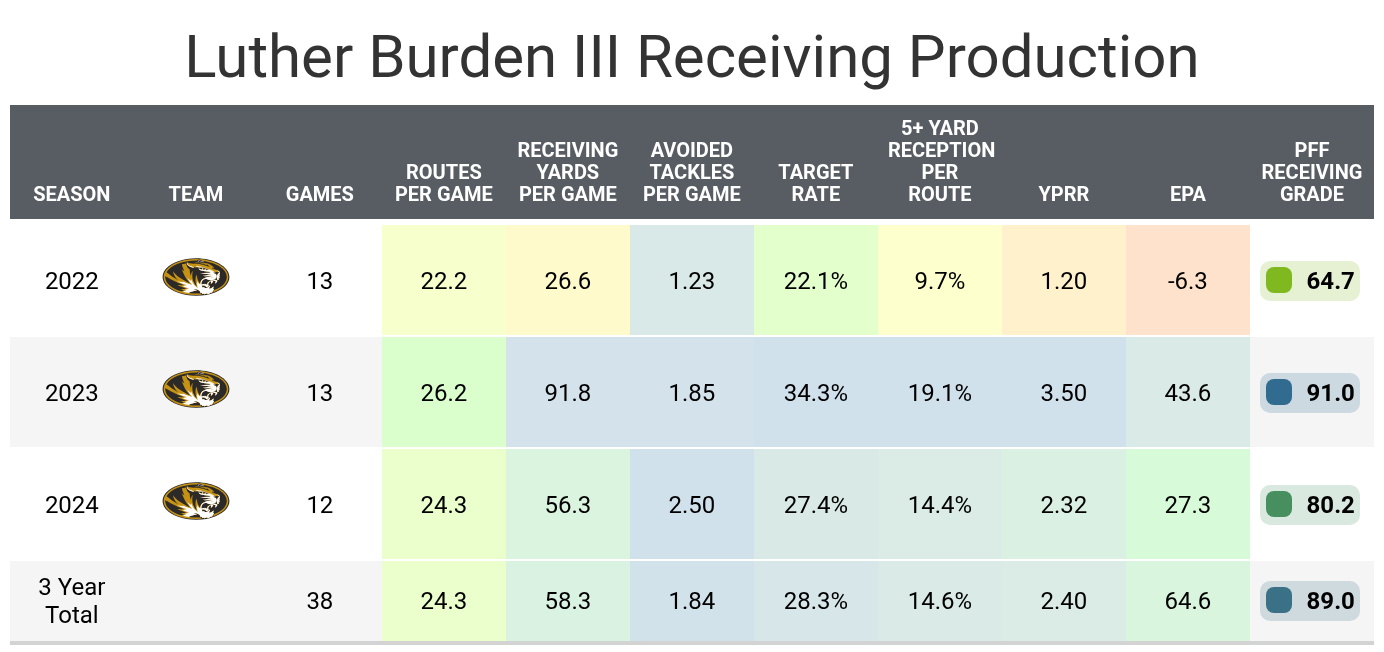
12. WRMatthew Golden,Texas (WR3)
Golden is the second wide receiver on this list who predominantly played as an outside wide receiver in college. The Texas product is ranked this high due to his traits more than his college production. Golden has the second-lowest PFF receiving grade for a wide receiver who was either picked in the first round or is projected to get picked in the first round over the past five seasons. This doesn’t necessarily need to be a bad thing, as Brian Thomas Jr. was the only wide receiver with a lower PFF grade who was also picked for his traits.
No wide receiver has more listed strengths in PFF’s strengths and weaknesses for the top prospects series. The article includes multiple references to his footwork, as well as his work on the sideline and excellent one-handed catches. While he predominately played on the outside in college, his yards per route run nearly doubled from 1.43 to 2.64 when moved to the slot. An NFL offense being willing to move Golden around the formation might lead to more success.
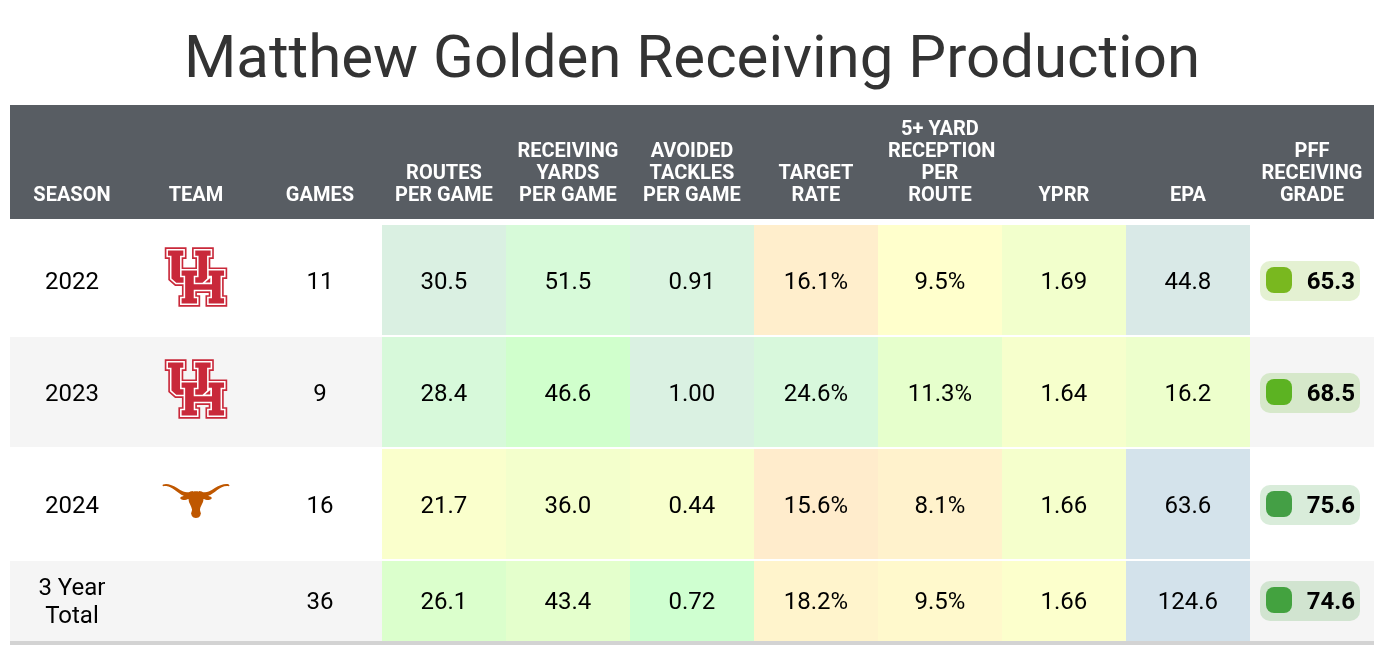
13. WREmeka Egbuka,Ohio State (WR4)
Egbuka is lower on this list than other dynasty rookie rankings because of positional scarcity. Seven running backs feature in the top 70 of PFF’s big board — a stark contrast to the average of 2.7 over the previous seven drafts. The quality of wide receivers from one draft to the next has been more consistent, so it was just as easy to find good wide receiver options in the past few drafts, and there should be plenty of good choices in future drafts.
Egbuka might be a safer option than some previously listed running backs. He is similar to Luther Burden III in that he played primarily from the slot in college. While he is at risk of playing only in the slot in the NFL, he found success when lined up out wide and has the size to play the Z role in the NFL along with the slot.
Egbuka might not be as fast as Burden or other similar high-YAC slot receivers, PFF lead draft analyst Trevor Sikkema references his control multiple times in addition to his balance and football intelligence, which helps him get open. The easiest way for Egbuka to shoot up these rankings is to land on a team where he can quickly see a high target share.
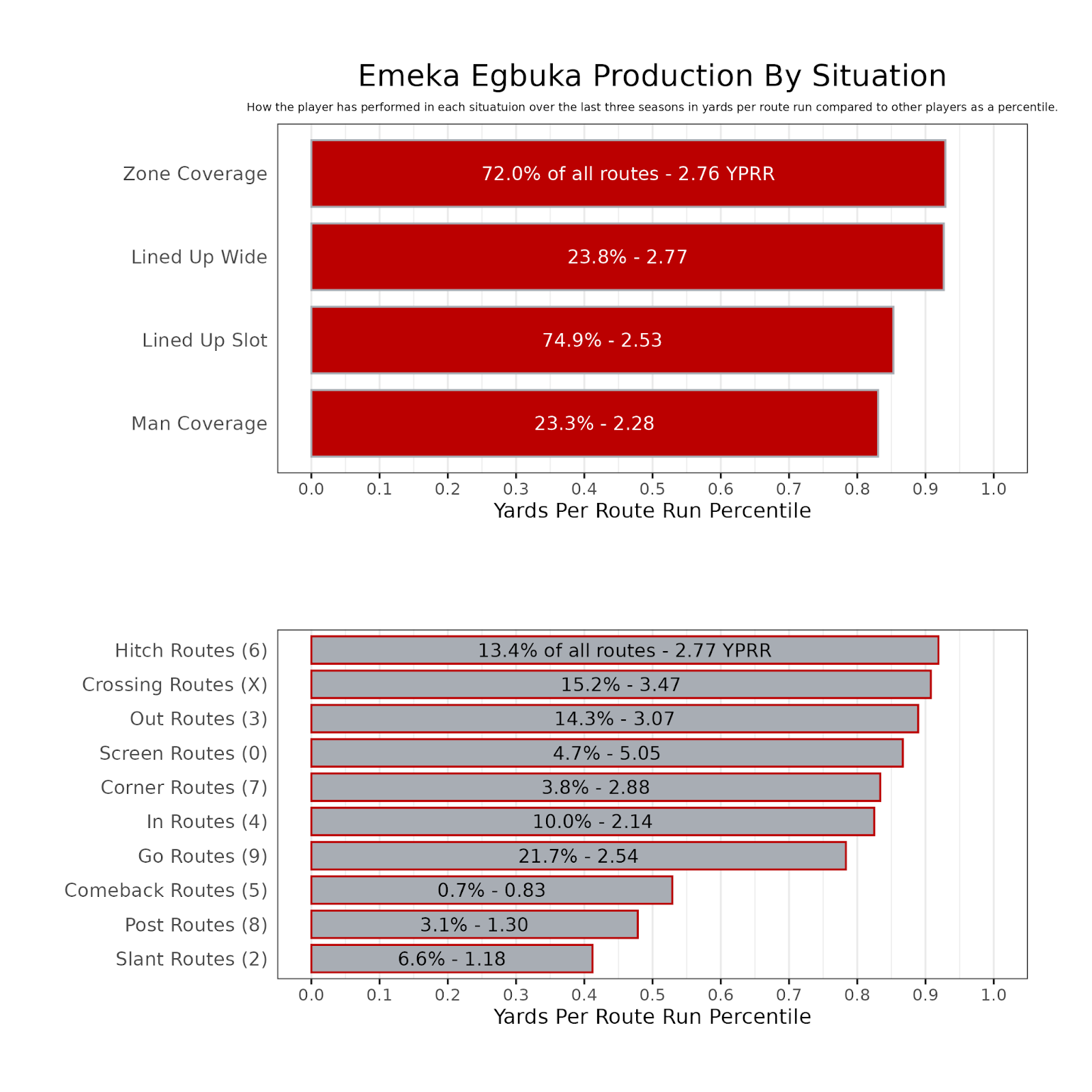
14. WRTravis Hunter,Colorado (WR5)
Hunter’s 89.7 PFF receiving grade over the past two seasons is directly in the middle of the other receivers who could be picked in the first round. He notched the most touchdowns and the fewest dropped passes of the five. His separation rate against single coverage is the best among those five receivers.
While he wasn’t as accomplished as other receivers in the class, many consider him the best receiving option. PFF’s soon-to-be-released draft guide notes, “As a receiver, he doesn’t have as much polish in releases, route nuance and beating press. However, all that can be improved and explained by not devoting all his time to one position.” If Hunter becomes a full-time receiver in the NFL, he will be the top wide receiver in dynasty drafts based on his talent.
Hunter has the most complicated projected role of any fantasy-relevant prospect in recent memory.
If we ignore the possibility of Hunter playing on defense, he fits best as a Z receiver in the NFL. He gained experience playing X and in the slot in college, and while any of the three receiving roles are possible, his size and speed suggest that Z is his best fit. Players such as Ja’Marr Chase, Puka Nacua, Brian Thomas Jr. and Malik Nabers have all dominated at that position recently.
There is a question about how much Hunter will play at wide receiver and, if so, how much playing time he will see. He was adamant at the NFL combine that he would play both positions in the NFL. If he were to split time between the positions, it would make more sense to play full-time cornerback and part-time wide receiver than vice versa. It’s easier to have a package of plays at wide receiver planned out compared to a package of plays on defense.
No player has more fantasy value to gain or lose during the 2025 NFL Draft than Hunter. A lot will be determined simply from whether the commissioner calls him a wide receiver or cornerback when he’s selected. He could range from being a top-20 fantasy wide receiver in redraft leagues to undraftable outside of IDP leagues.
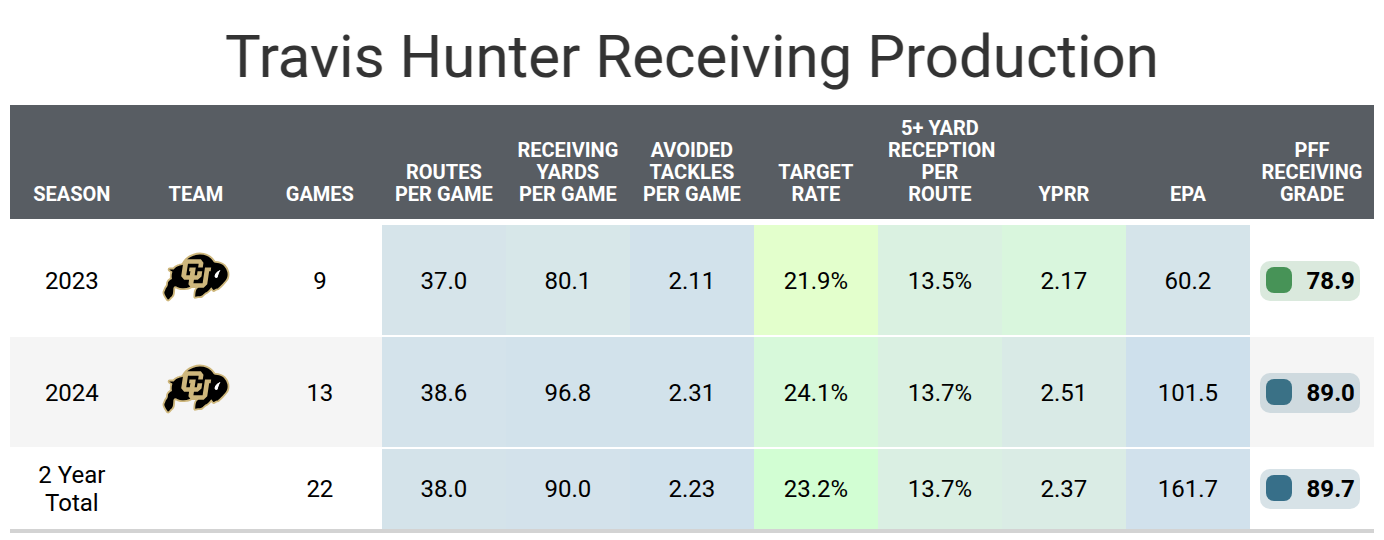
15. TEColston Loveland,Michigan (TE2)
While Loveland is ranked right behind Warren at tight end, there is a pretty sizable gap between the 10th and 11th picks. If you are in a dynasty league that won’t hold its rookie draft in a few months, it could be good to acquire more picks in the top 10 or trade back if you have pick Nos. 11 or 12.
There is a lot to like about Loveland as a receiver, as he earned high PFF receiving grades in 2023 and 2024. His PFF run-blocking grade fell below 55.0 in all three of his college seasons — a big reason there is a gap between him and Warren on PFF’s big board and consensus boards. His fantasy value could largely depend on the philosophy of his offensive play-caller.
Jonnu Smith earned a 40.5 PFF run-blocking grade last season and started the year playing less than 50% of his team’s offensive snaps. He then gained playing time as the year progressed and was one of the top fantasy tight ends to close the season. Sam LaPorta earned a 55.1 PFF run-blocking grade last season, but that did not impact his playing time in Detroit. Players such as Zach Ertz (41.3), Pat Freiermuth (44.7) and Noah Fant (42.3) also recorded notably low PFF run-blocking grades, which led them to play in rotations that hurt their fantasy value.
Loveland has been most often mocked to theDenver Broncos and Los Angeles Chargers, who both have offensive play-callers who typically rotate their tight ends. But they have quality quarterbacks and offenses, which could help him overcome playing in a rotation.
